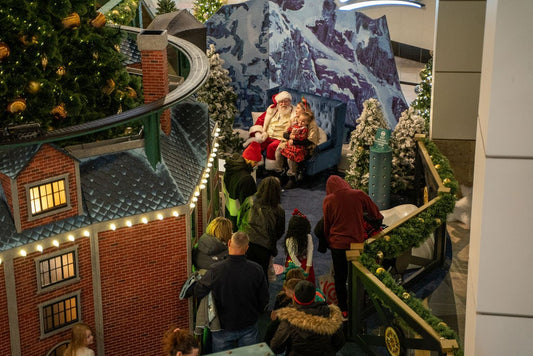Kevin Chapin makes his living shaping slabs of spruce and maple into beautiful forms. But Chapin isn’t a sculptor, exactly; he’s a luthier, and the rough piece of spruce that lay on his work bench one recent morning will, sometime later this winter, become a cello.
This particular instrument will be a copy of a 1750s cello built by Giovanni Battista Guadagnini, one of the greatest Italian luthiers. Its future owner plays a Guadagnini in the New York Philharmonic, but he wants a copy so his valuable instrument doesn’t have to travel with him. “This is going to win, totally,” Chapin says, gesturing to the original, which rests on a frame where Chapin has been measuring it down to the smallest detail. “I mean, I’m not going to try to compete with a Guadagnini. But I’m really glad I get to make one in its image and make a study of such a great master and one that’s so desired.”
sponsored by
In his relatively young career—Chapin opened his business, K. H. Chapin Fine Violins, in Norwalk in 2014 and came to New Haven in 2015—the maker of stringed instruments has already completed several projects with the weight of centuries of craftsmanship behind them. He has copied a Guadagnini violin, a cello built by the Venetian luthier Matteo Goffriller (active in the late 17th and early 18th centuries) and a cello based on a 1700 instrument by Giuseppe filius Andrea Guarneri, for which Chapin won a tonal award in a Violin Society of America competition. He’s currently restoring a 1690s cello in addition to building the Guadagnini copy.
There’s a rhythm to the work as Chapin bows his head and leans into the back of the new cello, scraping and shaving it into shape. As the wood slab thins and becomes convex, the tools and the work will become more refined. It’s slow going—even without pauses for other projects and business, this cello would take him about three months to build and will sell for $25,000—but it can be meditative. Some days, Chapin says, it’s possible to spend most of the day without speaking, even when his partner, Alissa Lisosky, is in the shop writing up insurance appraisals, cleaning instruments, working on the books and doing simple bench work, and his pugs, Frank and Fester, are sleeping in their cozy bed under the work bench. Before I arrived, Lisosky says, they were listening to a Mozart opera.
Chapin shows me the raw pieces of the next instrument he’ll be building, with a spruce top— “very lightweight, very strong for its weight,” with good tonal quality—and a maple back and sides, providing the harder wood needed to support the spruce. Other woods offer pleasing sound quality as well, but Chapin says he always uses spruce because there’s “no sense reinventing the wheel. That’s been figured out.” The wiggle room is in finding the right pieces of wood and in some details that—at least to the untrained eye—are subtle. One violin might be more “narrow waisted” or longer than the next, with slightly different shapes to the “f holes,” the iconic curling slits in the front next to the bridge.
It’s possible, Chapin says, to make exact copies of instruments like the Guadagnini through the use of technology. He has colleagues who will run an instrument through a CT scan and use it to draw up plans, but he’d rather study the old-fashioned way, with his own eyes and hands. “I’ve learned so much by having to work from nothing and then bring it into something,” he says. “You can buy premade forms… with a template and all that, or you can do it yourself, and in the process of doing it myself, I learn so much about the instrument.”
In other words, there are no shortcuts here. As a result, Chapin’s studio in the Erector Square complex, with a workshop and a separate storage space he plans to convert into a room where customers can try out his instruments, is pretty low-tech. Taking up one rear quarter of the shop are a drill press, a band saw, a disc sander and a circular sander. A trio of horse tails hangs in another corner, waiting to be used for restringing bows. Wood pieces are glued together with adhesive derived from rabbit hides, the same glue that’s been used for hundreds of years and hasn’t been surpassed by anything synthetic. Most of the process has “been figured out already, so there’s no sense trying to go crazy trying to make improvement on something that’s been working for 300 years,” Chapin says. “By being able to study and learn from previous masters, you can make a pretty good instrument.”
The masters he’s referring to are the makers of the classic instruments that come his way, but first he was the student of many modern teachers. His father was a machinist, so Chapin naturally “grew up tinkering and making stuff.” He played the drums and trumpet and violin, “but I was more interested in looking at the thing and trying to figure out how it was put together than I was actually practicing.” When it was time to choose a college, Chapin decided he didn’t want to follow the crowd. Instead, he enrolled in the Chicago School of Violin Making, a three-year program with only 25 students.
At the same time, he gained work experience, first cleaning rental instruments, later learning restoration techniques and going home to build copies in his off hours of instruments from the shop that he found stylistically and tonally intriguing. Later he learned how to restring bows—a basic offering, “kind of like an oil change”—and apprenticed with a respected cello maker before heading out on his own, ultimately choosing New Haven for its thriving classical music community.
Chapin appears to especially enjoy the fact that youth education nonprofit Music Haven is located upstairs from him in Erector Square. Sometimes students come down to learn how artisanal violins, violas and cellos are built and what they look and sound like—which not only enlightens some of the city’s youngest musicians about a very old and refined craft but also gives that craft a chance to enchant another future luthier.
K. H. Chapin Fine Violins
Erector Square – 315 Peck St, New Haven
Hours (by appointment only): Tues-Sat 10am-7pm
(203) 498-2548 | KHChapinFineViolin@yahoo.com
www.chapinviolins.com
Written by Kathy Leonard Czepiel. Images 1 and 4-5 photographed by Kathy Leonard Czepiel. Images 2-3 photographed by Dan Mims.








